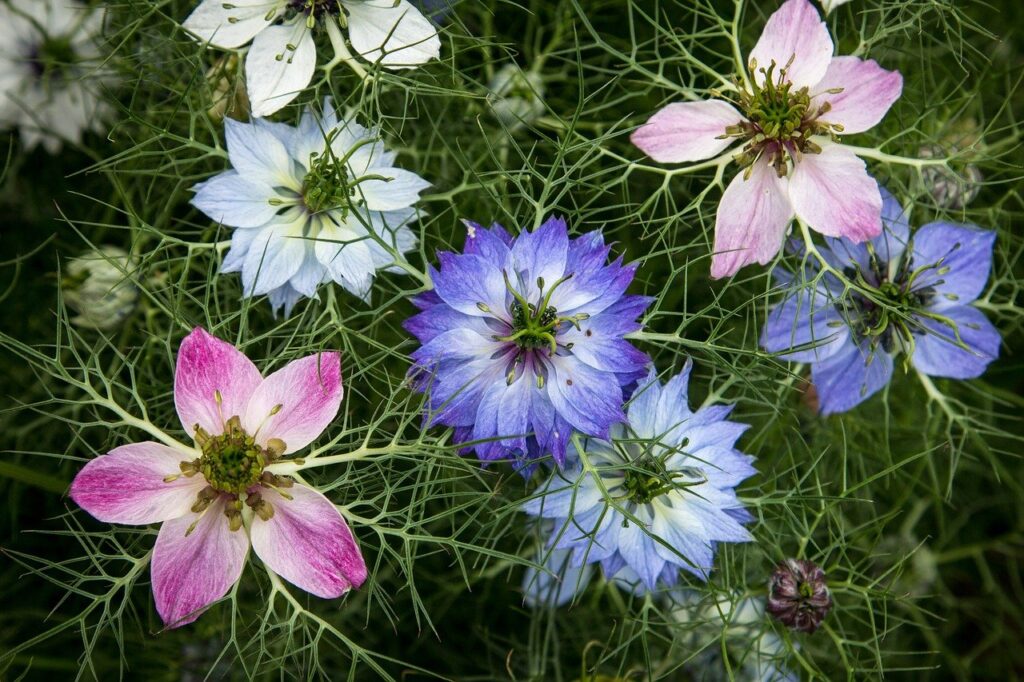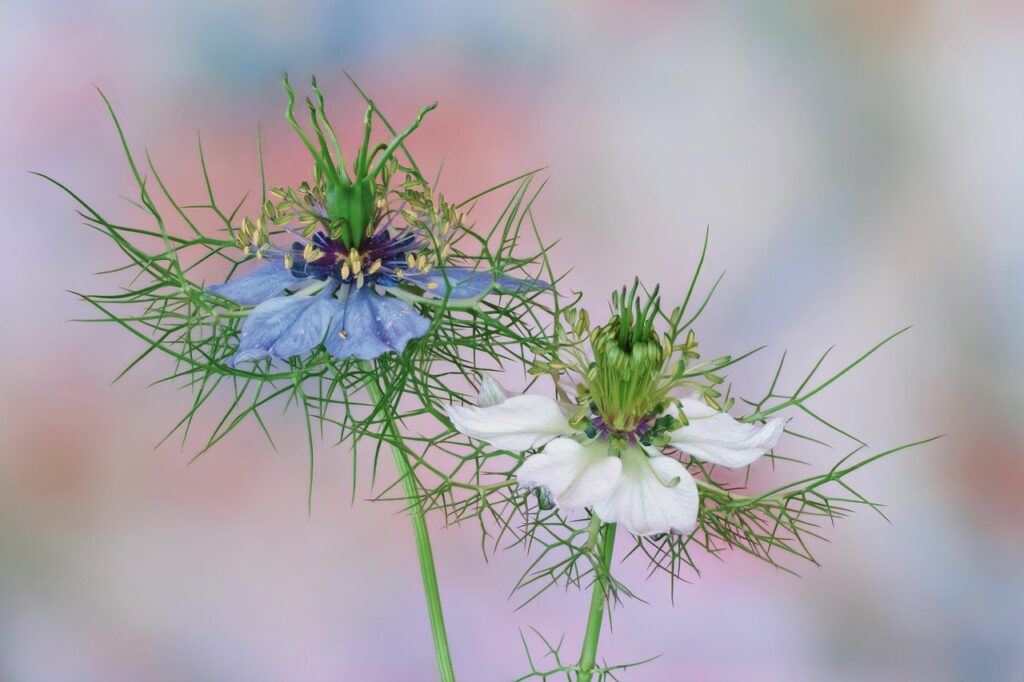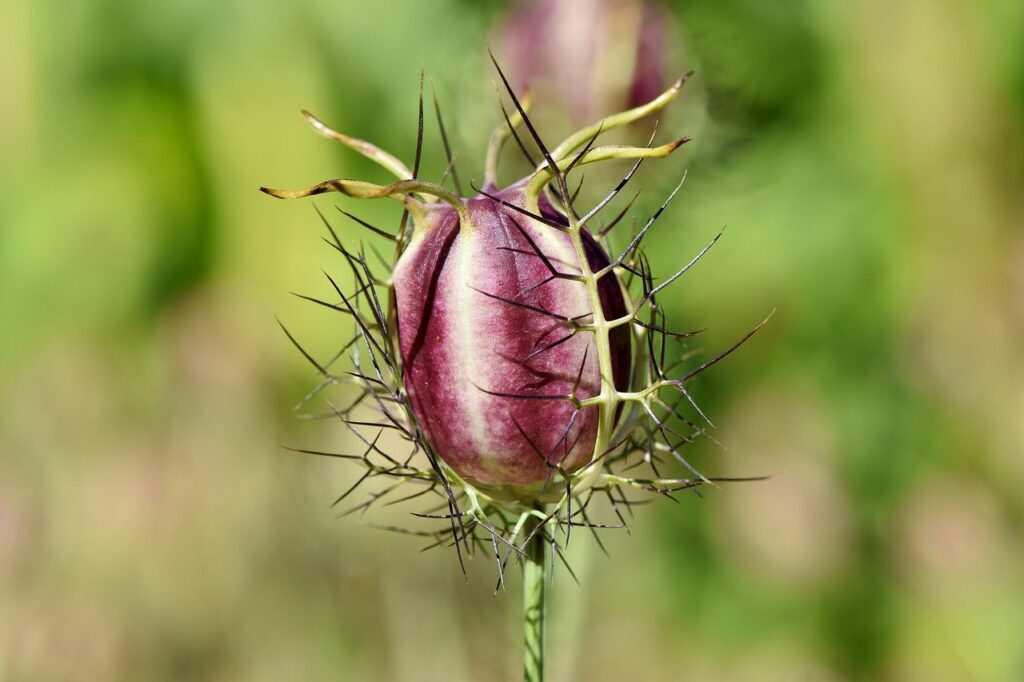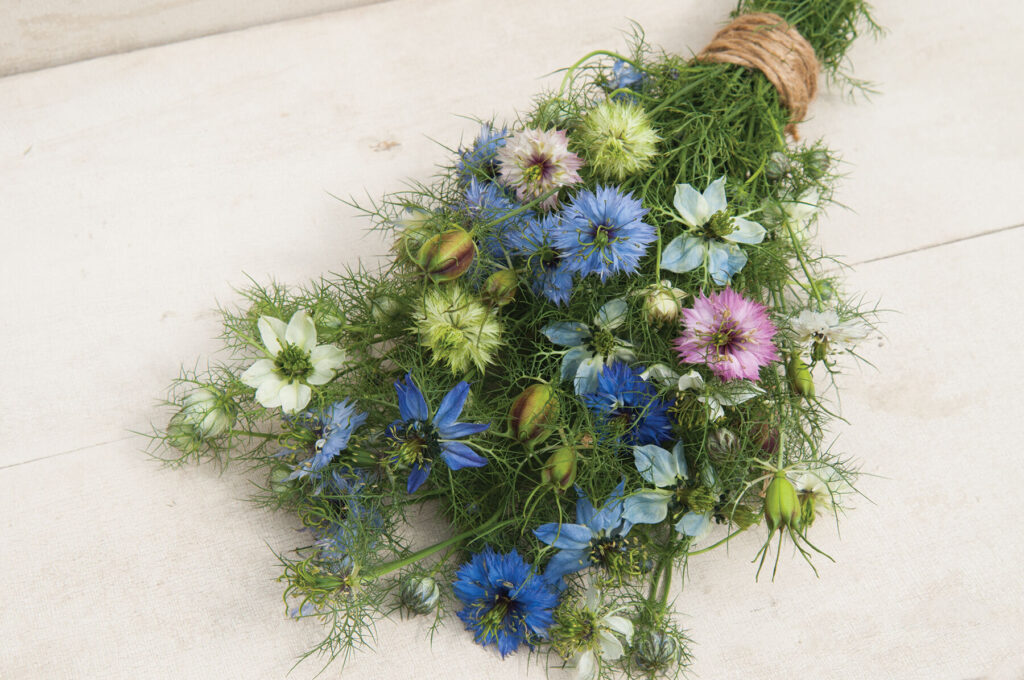
Love-in-a-Mist, Lady in the Bower, Ragged Lady, Hair of Venus
Love-in-a-Mist, or Nigella damascene, is a lovely and delicate flower favorite. It’s a cottage-garden standard, with its sweet small flowers nestled in a mass of ferny foliage.
It lends an old-fashioned and romantic air to any flower garden, pollinator plot, or cut flower arrangement. It is also loved for its striking seed pods, which are considered as decorative as the flowers themselves.
Nigella damascene also comes with a host of whimsical common names: Love-in-a-Mist, Love-in-a-snarl, Love-in-a-puzzle, Lady in the Bower, Ragged Lady, Devil-in-the-bush, Hair of Venus, and more.
Benefits of Love-in-a-Mist
- Flowers attract bees and other pollinators to the garden
- Suitable for garden borders or hanging baskets
- Excellent dried flower
- Great filler for bouquets
- Self-sows prolifically once established

Description of Nigella damascene
This feathery annual plant grows anywhere from 14 to 24 inches high and about 12 inches wide. It features fern-like foliage of bright green, and resembles fennel with its lacy bracts.
The blooms are about 1.5 inches in diameter and usually present in blue. However, white, lavender, and pink are not uncommon.
The seedpod is up to 2 inches long and is green with purple stripes. This makes the seedpods popular for dried flower arrangements.
Nigella damascene is native to southern Europe, northern Africa, and southwest Asia. It is commonly grown in temperate regions worldwide.

Tips for Germination
In southern gardens, plant Nigella damascene in late fall before any frost. Direct sowing is recommended, as the plant is sensitive to root disturbance. Sow sparsely in the garden and cover very lightly or scratch into the soil gently and water. No cover is needed over the winter.
In more temperate climates, plant in a similar fashion in spring, once soil temperatures have reached 60°F.
Plant in loose, well-draining soil containing plenty of organic matter. Nigella damascene appreciates a more acidic soil, as well.
While not recommended, you can sow in large cell packs and transplant out within 4 to 6 weeks of germination. Avoid waiting too long, as Love-in-a-Mist’s taproot is easily damaged.
Love-in-a-Mist is a short-lived annual, so succession sowing every 2 – 3 weeks will ensure more flowers.
Care Tips
Plant in full sun or partial shade in slightly acidic soil. Space about 8-9 inches apart in well-draining soil. Water regularly, but avoid over-watering soil to prevent disease.

Buy Love-in-a-Mist Seeds Here
| Species Name: | Nigella damascene |
| Common name(s): | Love-in-a-Mist |
| Defining Characteristics: | Delicate blue, white, or pink flowers surrounded by feathery, fennel-like foliage and attractive seeds heads of green and purple. |
| Temperature requirement: | Sow seeds at 60°F |
| Watering frequency: | Keep moist until germination occurs then water as needed. |
| Lighting: | Full sun, but will tolerate partial shade |
| Soil type: | Prefers rich, moist, slightly acidic soil |
| Growth rate: | Slow when sown in fall, moderate in spring |
| Height: | 1.5-2 feet tall in |
| Origin: | Native to Southern Europe, North Africa, and Southwest Asia. |
| Regional locality: | |
| USDA Hardiness Zone: | N/A -- Annual |
| Toxicity Notes: | For more information please visits the ASPCA list of Toxic and Non-Toxic Plants list of Toxic and Non-Toxic Plants |
| Common Pests: | whiteflies, thrips |
| Common Problems: | Can be prone to fungal disease if overwatered or planted too densely |
| Perfect Potting Companions: | Bachelor's Buttons |
| Additional Notes: | Use a balanced organic fertilizer for improved blooms |
